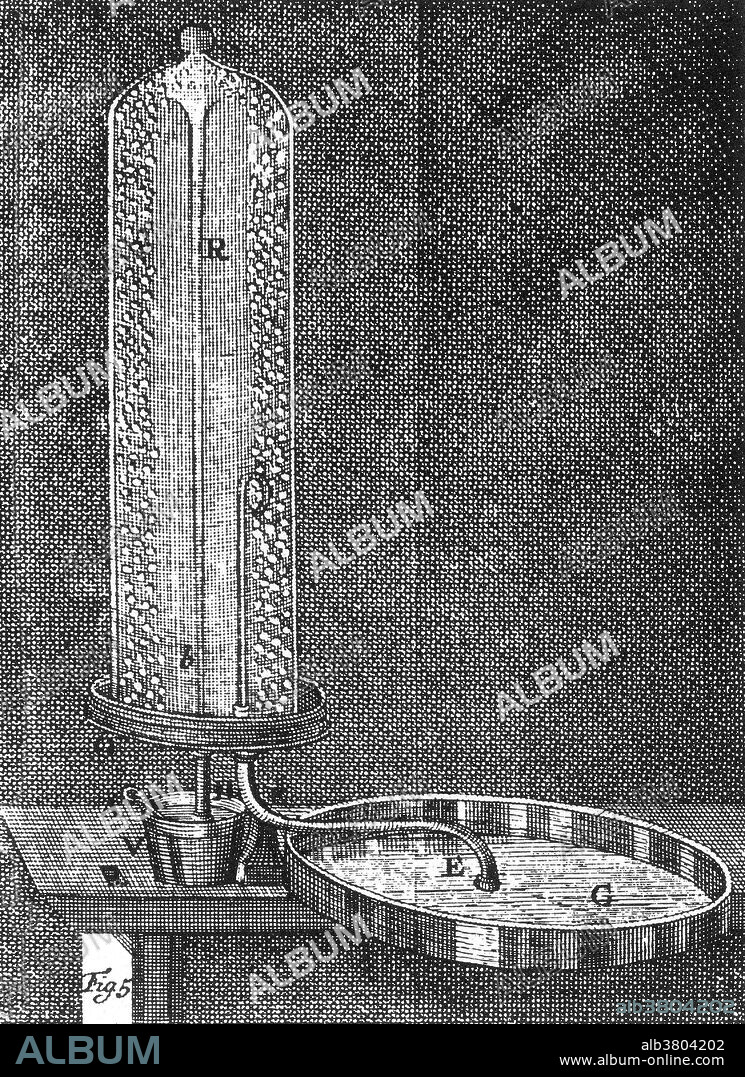alb3804202
Electrostatic generator experiment, 1700s

|
Add to another lightbox |
|
Add to another lightbox |



Title:
Electrostatic generator experiment, 1700s
Caption:
Electrostatic generator experiment. In 1705, Hauksbee had discovered that if he placed a small amount of mercury in the glass of his modified version of Otto von Guericke's generator, evacuated the air from it to create a mild vacuum and rubbed the ball in order to build up a charge, a glow was visible if he placed his hand on the outside of the ball. This remarkable discovery was unprecedented at the time. This glow was bright enough to read by. It seemed to be similar to St. Elmo's Fire. This effect later became the basis of the gas-discharge lamp, which led to neon lighting and mercury vapor lamps.
Credit:
Album / NYPL/Science Source
Releases:
Model: No - Property: No
Rights questions?
Rights questions?
Image size:
3166 x 4350 px | 39.4 MB
Print size:
26.8 x 36.8 cm | 10.6 x 14.5 in (300 dpi)
Keywords:
1700S • 1705 • 18TH CENTURY • 18TH CENTURY, THE • ART • ARTWORK • BW • CELEBRITY • DRAWING • ELDER • ELECTRIC GENERATOR • ELECTRIC • ELECTRICAL • ELECTRICITY • ENGLISH • EUROPEA • EUROPEAN • EXPERIENCE • EXPERIMENT CONSTRUCTION = SETTING UP EXPERIMENT • EXPERIMENT CONSTRUCTION • EXPERIMENT • FAMOUS • FRANCIS HAUKSBEE • FRANCIS HAWKSBEE • GENERATOR • GLOW • GLOWING • HAUKSBEE • HAWKSBEE • HISTORIC • HISTORICAL • HISTORY • ILLUSTRATION • IMPORTANT • INSTRUMENT MAKER • LIGHT • MERCURY EXPERIMENT • NOTABLE • PHYSICS • SCIENCE • SCIENTIST • SETTING UP EXPERIMENT • WELL-KNOWN
 Pinterest
Pinterest Twitter
Twitter Facebook
Facebook Copy link
Copy link Email
Email

